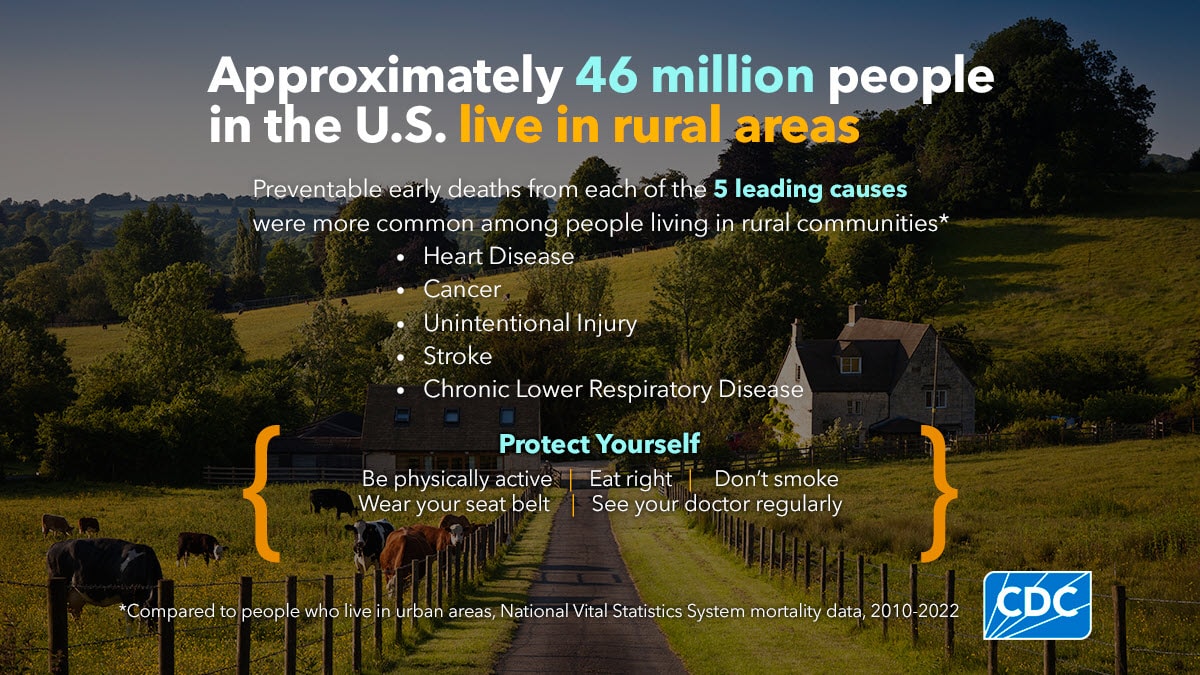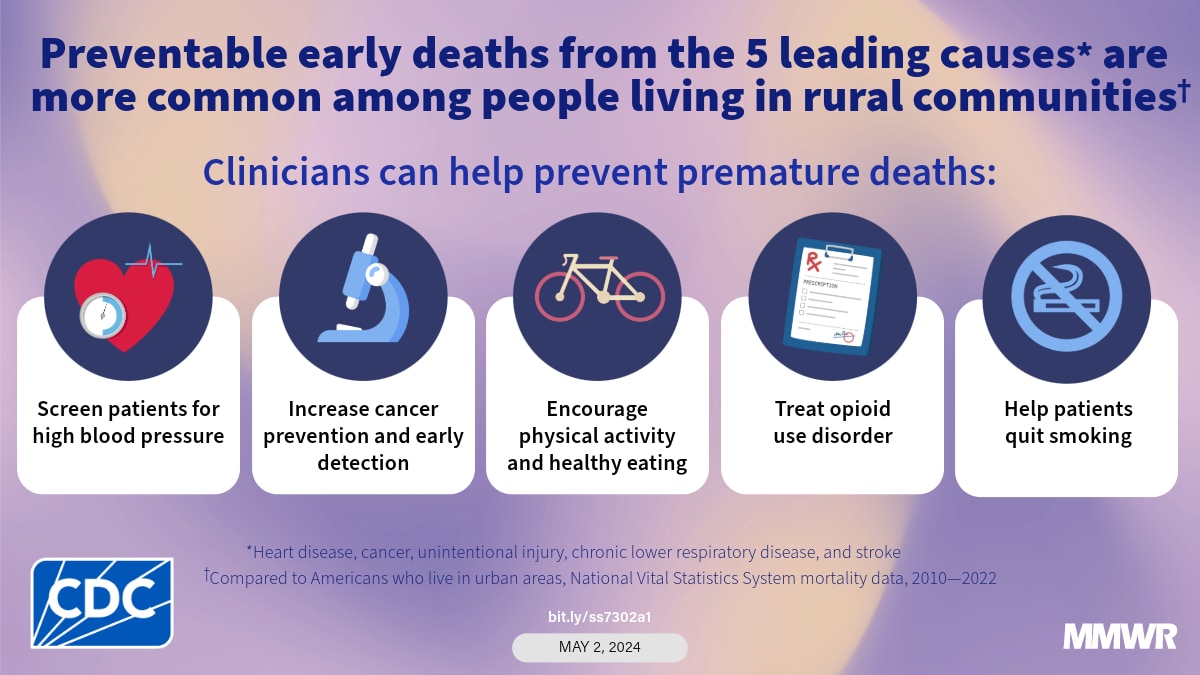
Leading Causes of Death in Rural America
Updated April 30, 2024
In a striking example of the health gap between rural and urban America, data from CDC demonstrates that people living in rural areas are more likely to die early from five leading causes than their urban counterparts.
In 2022, many early deaths among rural residents could have been prevented, including 17,000 from heart disease, 2,800 from stroke, 6,000 from cancer, 10,000 from unintentional injuries, and 6,000 from chronic lower respiratory disease (CLRD).
Some 46 million people — more than 15% of the U.S. population — currently live in rural areas. Several demographic, environmental, economic, and social factors might put people who live in rural communities at higher risk of death from these public health conditions.
A CDC report provides data from 2010-2022 on the widening gap in some causes of preventable early deaths between rural and urban areas. The findings can help guide local public health programs to reduce these health risks by:
- Screening patients for high blood pressure
- Increasing cancer prevention and early detection
- Encouraging physical activity and healthy eating
- Promoting smoking cessation
- Promoting motor vehicle safety
- Treating opioid use disorder
The findings in this report also highlight the need to understand and address the social, environmental, and structural factors contributing to disparities in preventable early deaths between rural and urban areas.
Preventable Premature Deaths from the Five Leading Causes in Nonmetropolitan and Metropolitan Counties — United States, 2010–2022
Potentially Excess Deaths from the Five Leading Causes of Death in Metropolitan and Nonmetropolitan Counties — United States, 2010–2017


